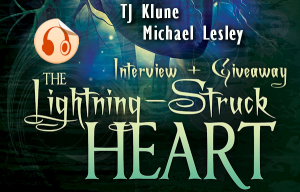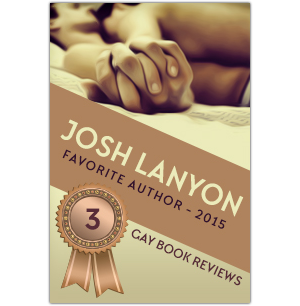
Title: The Arsenic Flower
Author: Scot D. Ryersson
Cover artist: Scot D. Ryersson
(image by iStock.com/Juan Facundo Mora Soria)
Publisher: Bristlecone Pine Press
Amazon: Kindle
Genre: Historical/Paranormal/Gothic
Length: 24,140 words/95 PDF pages
Rating: 3.75 stars out of 5
A guest review by LadyM
Review summary: A well-written, captivating gothic tale of revenge that reads as a final chapter of a longer story and might not be completely accessible to the average reader
Blurb:
A British nobleman; a prominent lawyer; a renowned physician; and a famed judge of Her Majesty’s court—all marked for murder. But by whom, and why? The only clue is a mysterious green flower, which holds the secret to a diabolical plan of revenge; one whose thorny roots plunge deep into the long buried past. Its mastermind, an exquisite living corpse of a youth, in whose icy veins poison flows. Here is an erotic tale of a supernatural settling of scores, set in the absinthe-tinged hothouse era of late-Victorian decadence. One ripe with intrigue, suspense, and horror, interwoven with forbidden passions and unrequited desires that will stir the blood of any reader.
Review:
The Arsenic Flower is a story that should be read at least twice: the first time to plunge right in and enjoy the excellent writing and atmosphere, and the second time to savor it like a glass of absinthe and catch up with all the clues, historical and literary references you’ve missed the first time. In a way, this is the source of both story’s strengths and weaknesses. But, I’m running ahead of myself.
The story begins with the apparently accidental death of an English lord during a hunt. The doctor, called to examine the body, conceals, however, the existence of green carnation found in the victim’s hand. Several weeks later, a young man arrives in London. The appearance of his ominous black carriage and his presence at the auction of one particular object causes alarm to several men. They have committed a crime against Briar almost twenty years ago. This fact and his unchanged, youthful appearance make them fear for their lives. And they have every right to be. While I will not reveal what was done to Briar, trust me when I tell you it’s sufficient for anyone to contemplate revenge.
The writing emanates the great predecessors and contributors to gothic literature, many of whom are mentioned or alluded to in the story (Shakespeare, Wilde, Baudelaire and Poe being some of them). It’s evocative, atmospheric and often laced with irony and dark humor.
“To those assembled, it was at first as if an angel had somehow forgiven their trespasses, exonerated their sins, and, in corporeal form, arrived from Paradise to give them the message personally. Then, just as quickly, when a shadow fell and a flash of flickering gaslight sizzled across the youth’s face, there was an audible gasp of horror as that absolving seraph metamorphosed into the personification of death itself, the gentry’s own Grim Reaper, ghastly and cadaveric in his fitted Huntsman & Sons riding coat, black with firm shoulders tapering to a nipped, sculpted waist, an awful green-tinged flower blooming upon his black lapel. All that was missing from the macabre ensemble was a sterling scythe monogrammed at Asprey’s. The congregation shrank, a litany of mea culpas being offered, even from the C of E’s in their flock.”
At the same time, the structure of the story has a modern, episodic, almost cinematic feel. The sequence of scenes—a couple of which could find their place in a contemporary horror movie—builds the suspense and prompts the reader to quickly move on. In my desire to see what will happen next, to find out how Briar will deal with those who wronged him as well as who and what Briar actually is, I missed many of the clues available throughout the story. Additionally, the characters talk about the past events as only people who participated in them would, making the reader to pay close attention, read between the lines and make connections between the bits of information. Hence the second reading. If I have a complaint about the writing, it’s a minor one: the overuse of “agate eyes” (nine times in a relatively short peace).
Briar is the least developed character. We know how he looks like, we know the extent of his decadence, but we never get to know Briar the man. He is more a force than a person, a Mephistophelian figure that directs the events more than a protagonist. You can say that the cover perfectly reflects Briar for he is a man without the face. His victims, especially Doctor Leonard Edgerton-Smith and Judge Baron Vernon, get more detailed treatment. It is their personalities and motivations, their duplicity and hypocrisy that are revealed in the story.
There are a lot of references and allusions to great writers and historical events in the story. To completely enjoy The Arsenic Flower, the reader has to know a little bit of history, mythology and literature. For example, there are quotes (many by Oscar Wilde) at the beginning of every chapter and it pays to know where they come from. Briar’s destiny mirrors that of Dorian Gray (“Or maybe he has a portrait of himself rotting away in some garret somewhere,” Edgerton-Smith offered as facetious explanation ”.), although his actions are motivated by revenge rather than hedonism. The Cleveland Street scandal is mentioned. Some of the characters’ names have a meaning important for the story. This is not a bad thing per se. I like it when the author treats the readers with respect, demanding more from them. However, I think here this worked against the story. In a longer book, this would not be a problem. In The Arsenic Flower it worked as a distraction from the central events. The same goes for the epilogue on the deathbed of a famous author which reestablished some of the information the careful reader had already gleaned from the story. Because of all of this, The Arsenic Flower read as the last chapter of a longer story or a novel. In a way, I wish that it was, because there was certainly a potential novel hidden here. But, because it wasn’t, I wish the author offered us more of Briar and Phelan instead: some background story, the consequences of the price paid, etc. This isn’t romance, of course, but a lot of story’s success lies in reader’s ability to identify or sympathize with the protagonist. The line between mysterious and obscure is sometimes very fine.
It was very difficult for me to rate this story. I enjoyed the writing, atmosphere, sensuality and wit that paid tribute to Oscar Wilde much better than anything else. It was clever and it was fun. However, I couldn’t help but feel that there should be more or even less — because the trimming of some elements would give additional focus of the story. Other readers may feel differently. In the end, I’m recommending it to the readers who enjoy the gothic stories and want to extend their reading experience, because the story certainly isn’t the usual affair in this niche. I will also keep my eye on the author’s other works. Hopefully, he will offer us something longer, because I believe his talent will shine there better.















LadyM
Reading your review I’m not sure I would like the story as much as you did. I love Greek mythology and some history and I grew up on Oscar Wilde quotations, but I would prefer a writer who didn’t depend on history and the writings of others to make his point to the readers.
I wouldn’t say that the author depended on the things I mentioned above. It was more of a tribute, but, it was also a distraction, at least for me. But, the writing is really, really good, and I would recommend you to at least give it a try.
Thanks for this great review, LadyM. I am so glad you enjoyed the book and I really think you “got it.”
L
Hi, Leslie, you are welcome! The writing was really excellent. I hope to read more from this author and soon. ^^